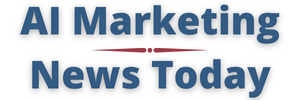David James is CLO at 360Learning, host of The Learning & Development Podcast and former Director of L&D for The Walt Disney Company.
The latest DHT global survey of L&D practitioners revealed what’s become a somewhat open secret: The majority of teams using AI are still leaning on it for the sole purpose of making content faster. Drafting scripts, creating videos, generating assessments, polishing presentations—it’s the most natural entry point for generative AI. So for many L&D professionals, it feels like progress.
But if all we do is produce more courses more quickly, we’ve simply built a more efficient factory. And factories aren’t what organizations need. Courses alone can’t solve organizations’ skills gap, and the L&D metrics that matter aren’t completions or enrollments. We need to know whether people can actually do the work required to transform the business.
The Comfort Trap
Content creation is comfortable territory for L&D teams. It’s easy to measure, and it feels productive. But it also leads us to mistake activity for impact. We can churn out learning assets faster than ever before, but if they don’t solve the problems people actually face, then we’re simply scaling irrelevance. Adopting generative AI tools doesn’t fix that. In fact, it risks entrenching this lack of relevancy. If the output is already disconnected from the work, making more of it won’t help.
For decades, L&D has been criticized for being out of step with business priorities. Leaders say programs don’t solve the right problems, while employees complain that courses aren’t relevant to their work. As a result, when budgets tighten, L&D is often first on the chopping block.
When we treat AI as just another authoring tool, we fail to change the narrative. We’ll look industrious, but we won’t move the needle. Using this technology to produce more content more cheaply reinforces the worst perceptions of our function: a service provider that exists to fill catalogs.
What we need instead is a new kind of engine—one that’s built not for production but for performance. A skills engine focuses every activity in L&D around identifying, developing and deploying the skills that drive business results. It connects learning to work in a measurable way, ensuring that capability, not content, is the output. This is where AI can truly elevate our impact, if we’re bold enough to think bigger and expect more from ourselves.
What A Skills Engine Looks Like
The real opportunity that AI presents L&D teams isn’t efficiency. It’s alignment. Along with content, we can use AI for key functions like analytics, workforce enablement and strategy. Traditionally, L&D has struggled to gain traction with these areas. That struggle hasn’t been for lack of intent. It’s a lack of access to real-time business data, integrated systems and the analytical capability needed to translate insights into action. For years, L&D has been positioned on the periphery of performance data, relying on lagging indicators like course completions or survey scores. But AI has the potential to change that, putting the evidence of what drives performance directly into our hands.
• Analytics: Instead of guessing what employees need, L&D teams can use AI tools to surface patterns in performance data, survey feedback and business metrics. Then they can determine where capability gaps really lie and act on them.
• Workforce Enablement: From roleplay exercises that let managers practice tough conversations to personalized development plans that adapt in real time, the right AI technology can help us push learning closer to the flow of work. This ensures we tackle challenges at the moment of need.
• Skills Mapping: AI can benchmark job descriptions, performance reviews and role data to identify priority skills. That allows L&D to design interventions that target what the business truly lacks, not what’s easiest to package into a course,
This is the difference between a content factory and a skills engine. A factory pushes material into the system, but an engine generates the skills that drive the business forward. So, if we harness AI properly, we can reframe L&D’s role as the architects of capability who ensure the workforce can deliver strategy. That’s the relevance we’ve been chasing for years.
The Choice Ahead
Right now, L&D stands at a crossroads. The implementation of AI is accelerating, and the function is experimenting at scale. We can either continue channeling our energy into courses, modules and catalogs—mistaking faster production for greater value—or we can use AI as the catalyst to shift our focus from content to capability and from production to performance. Our relevance as a department depends on how well we build collective capability, develop skills at scale across the organization and ensure individuals don’t just get answers but get better.
Factories produce assets. Engines produce outcomes. If we choose the former, we risk irrelevance. If we choose the latter, we can finally deliver on the promise that L&D has been making for decades: not just learning but capability that drives transformation.
But it’s not AI that will decide which path we take. We will.
Forbes Human Resources Council is an invitation-only organization for HR executives across all industries. Do I qualify?


